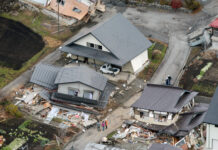TAIWAN: As the anti-China protests in Tibet gain international attention, China re-opened the region for tourists in March despite the coronavirus pandemic, thus, proclaiming “rapid growth of the regional tourist economy”.
With the Tibet Autonomous Region (TAR) witnessing 1.88 million domestic and overseas tourists on October 9, China has proclaimed the rapid growth of the regional tourist economy, The Taiwan Times stated.
It is important to note that it was due to the Chinese government’s re-opening of the region that the first and only case of coronavirus was seen here. The person was from Wuhan, the city from where the virus originated.
According to The Taiwan Times, there are many reasons why China is rushing to reopen the tourist sector of the TAR, but one key reason is the security concerns around growing instability in the region. The Beijing government has often used the excuse of “economic growth of the region” to defend its repressive policies in the TAR.
With “development and stability” as the primary policy direction, the government started pouring huge investments for economic development into the region; as a result, the Tibet Autonomous Region emerge as the fastest growing economy in China surpassing the national growth rate, The Taiwan Times stated.
However, the region is seeing a unique dual type of development. While on one hand, the region is becoming the fastest growing economy but as per the human development report TAR is the least developed region in China. Since the key objective of state policy is to maintain stability in the region, it is no surprise to see the construction sector and public management and social organisations with the largest GDP share – about 50 percent of the regional total GDP share, said The Taiwan Times.
The huge investment in these two sectors has led to the “structural transformation of the region from an agro-pastoral dominated economy to a service-led economy”. In 2005, China started the “Build New Socialist Village at the Countryside” programme aiming to “resettle Tibetan nomads into a permanent sedentary lifestyle”.
However, according to the 2013 report by Human Rights Watch, the relocation programme have displaced more than 600,000 herders off their land and put them into the government-constructed “towns”, The Taiwan Times stated. With lack of job opportunities and the resettlement programme, the local economy of the region has been ruined, the Human Rights Watch report said. (ANI)







